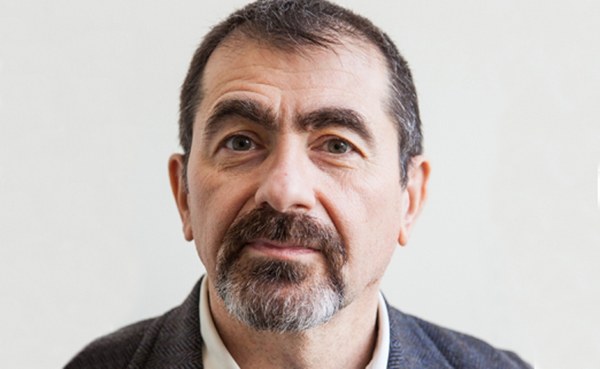Panel #2 | Global and Historical Precedents
Session chair: Frank G. Matero, Professor of Architecture, University of Pennsylvania
Matthijs de Boer | City-planner-architect, Rotterdam
Well designed water protection measures as future cultural heritage
Khosro Movahed | Professor of Architecture and Regional Planning, Shiraz Branch, Islamic Azad University, Iran
A Study on the Role of People in Saving the Historical Coastal City of Bushehr, Iran
Sara Penrhyn Jones | Bath Spa University
Troubled Waters: The role of practice-led research in understanding and documenting heritage loss.
Anna Somers Cocks | OBE, FSA Founding Editor and CEO, The Art Newspaper; former chair of Venice in Peril
Venice: they’re fixing the flooding, so why isn’t Venice saved?
SESSION ABSTRACTS
Well-Designed Water Protection Measures as Future Cultural Heritage
The Dutch created the Netherlands by collaboration and by design. The question ‘how to protect our built heritage against raising water’ is not new. In the north, the people of medieval Friesland built their churches on “terpen,” artificial hills, which are still characteristic artifacts in the flat landscape. Now, the terp is just as much part of the heritage as the church itself. Since protection against water is not only in our veins, but also visible in our towns and landscapes, the Dutch find it important that protection structures not only perform as required, but that they are good looking as well. The high tech solutions to regulate the water in Zeeland, as part of the Deltaplan, protect the towns and the land, and also the ecological qualities of the environment. But they are also “high design”. By making them visible and beautiful, measures against flooding and the expenses involved may be better understood and appreciated.
The way the Dutch deal with water in relation to the built heritage will be illustrated with cases like the new boulevard in Katwijk by the sea, and the historic city of Dordrecht, built where three rivers meet. | Matthijs de Boer
A Study on the Role of People in Saving the Historical Coastal City of Bushehr, Iran
Today, people’s participation is regarded as one of the most important topics in the urban management. Explaining the necessities, policies and practical methods of people participation in saving the historical coastal city is regarded as a helpful and important solution for Iran’s governmental organizations, such as the Disaster management organization.
The city of Bushehr which is located in the south of Iran, border of Persian Gulf is among the cities with natural disaster such as inundation. Bushehr was one of the most important cities in the medieval Islamic world and is regarded as one of the oldest coastal cities of ancient Persia. Throughout history, disaster management has been influenced by peoples` social behavior. This study wanted to define people’s participation in the programs related to saving the historical coastal city. The survey was carried out in February 2015. The statistical analysis of the questionnaire is done by using SPSS software.
The conclusion reached was that saving the historical coastal city combined with governmental support and peoples’ participation is necessary to ensure coastal protection. It is also very important to encourage urban and rural inhabitants to participate in saving the historical coastal city programs and to establish disaster management associations. | Khosro Movahed
Troubled Waters: The Role of Practice-led Research in Understanding and Documenting Heritage Loss
Troubled Waters, Stormy Futures: Heritage in Times of Accelerated Climate Change is an interdisciplinary project funded by the UK’s Arts and Humanities Research Council. By integrating traditional and participatory action research, as well as creative practice, it contemplates heritage as a multi-layered concept and process in times of unprecedented global environmental challenge. The research focuses on three case studies in coastal communities at risk of erosion and flooding: Durgan and Porthdinllaen in the UK, and Kiribati, in Micronesia. This paper will present findings from this project, which explores and troubles the notion of preserving tangible and intangible heritage in the face of accelerated climate change. It addresses the theoretical and practical preservation challenges of understanding and documenting cultural heritage in vulnerable, live communities. Working with the National Library of Wales, the project is developing an archival methodology for engagement within such communities. Troubled Waters aims to develop an understanding of what ‘heritage’ might mean in different contexts, and how rescuing the record of past (or indeed the present) can influence our understandings of the future; this recognises the link between endangered cultural heritage and the construction of future identities, and acknowledges the challenge for archivist (and all) to find bearings in potentially unchartered waters. | Sara Penrhyn Jones
Venice: They’re Fixing the Flooding, so Why Isn’t Venice Saved?
In 2017, the mobile barriers at the three openings between the Adriatic Sea and the Venice lagoon become operational. They will have cost about $10 billion and they will stop the city from being flooded. There is a widespread belief, shared by the Italian government and fostered by the consortium of businesses that is building the barriers, that Venice will then be safe until at least 2100.
This is not true because it takes no account of the chronic rise in the mean water level of the lagoon, a rise that is already eating away at the brickwork, plaster, stone and mosaics of the city. The 2011 Unesco report, From Global to Regional: Local Sea Level Rise Scenarios: Focus on the Mediterranean Sea and the Adriatic Sea, states: “There should be no doubt that the sea level will eventually rise to a value that will not be sustainable for the lagoon and its old city. The planned mobile barriers might be able to avoid flooding for the next decades, but the sea will eventually rise to a level where even continuous closures will not be able to protect the city from flooding. The question is not if this will happen, but only when it will happen.”
The average water level in the lagoon is already at 30cm [nearly 12 inches] above datum [established 1897]. If this rises by 80cm [31.5 inches] it will reach the critical threshold of 110 cm [43.5 inches], the level at which Venice begins to flood. In this case, Venice would experience regular flooding twice a day unless the barriers were almost permanently closed, with very serious implications for the health of the lagoon, which would become heavily polluted.
That rise of 31.5 inches could be with us as soon as 2100 if the Intergovernmental Panel on Climate Change (IPCC)’s higher estimate of sea level rise by the end of the century turns out to be right. We know now that this will apply to the Adriatic Sea as much as the Atlantic, because scientists have concluded that the level of the Mediterranean will lag by only a few months behind that of the oceans. | Anna Somers Cocks





